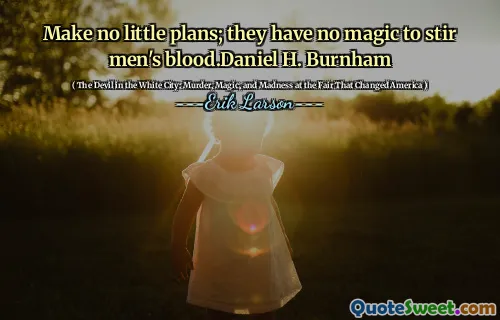He was a loner and intellectually intolerant.
In Erik Larson's "The Devil in the White City," the author explores the contrasting lives of two men during the 1893 World's Fair in Chicago. One of these figures is depicted as a solitary individual who finds it challenging to tolerate differing perspectives. This personal isolation highlights the struggles he faces, both socially and intellectually. His inability to connect with others deepens his loneliness, illustrating the darker aspects of his character.
This portrayal of intellectual intolerance reflects a broader theme in the book, where the intricacies of the human psyche come to light against the backdrop of innovation and ambition at the fair. The tension between progress and personal conflicts underscores the complexities of human nature and the societal changes occurring during that era. Larson's narrative captures the essence of these themes brilliantly, showing how individual stories intertwine with history itself.






